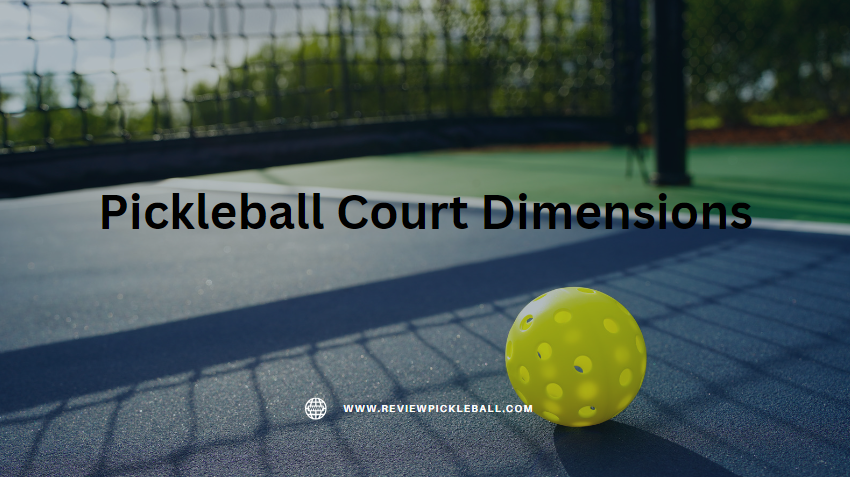Pickleball, a sport that combines elements of tennis, badminton, and table tennis, has been gaining immense popularity across the globe. Whether you’re a seasoned player or a curious beginner, understanding the dimensions of a pickleball court dimensions is crucial to enjoying the game to its fullest.
The Basics of Pickleball Court
Pickleball is typically played on a rectangular court divided into specific zones. The court dimensions play a pivotal role in the dynamics of the game. A standard pickleball court dimensions is 20 feet wide and 44 feet long, but there’s more to it than just these measurements.
Importance of Correct Court Dimensions
Getting the court dimensions right is paramount for players and organizers alike. It directly influences the pace, strategy, and overall gameplay experience. A court that deviates from the standard measurements can significantly alter the dynamics of a match.
Standard Pickleball Court Dimensions
To break down the specifics, a standard pickleball court is 20 feet wide, consisting of a 7-foot no-volley zone on each side of the net, often referred to as the “kitchen.” The length of the court is 44 feet, including a 10-foot service area on both ends. Understanding these measurements ensures fair play and consistency across matches.
Outdoor vs. Indoor Courts
While the standard dimensions remain consistent, there are variations between outdoor and indoor courts. Factors like surface materials, lighting, and weather considerations come into play, influencing the overall playing experience. Exploring these differences helps players adapt to varying conditions.
The Role of Net Height
In addition to court dimensions, the net height in pickleball is a critical factor. The net is positioned at 36 inches at the sidelines and 34 inches at the center. This lower height compared to other racket sports adds a unique challenge to the game, encouraging players to master precise shots.
Materials Used for pickleball court dimensions
The choice of materials for pickleball court dimensions construction can impact gameplay and longevity. Surfaces vary from asphalt to cushioned materials, each offering distinct advantages. Understanding these options allows players to choose courts that align with their preferences and playing style.
Also Read : Best Pickleball paddles
DIY pickleball court dimensions Construction
For enthusiasts looking to create their own pickleball court, a step-by-step guide can be invaluable. From preparing the ground to marking court boundaries, each detail contributes to a professional-looking and functional playing space.
Maintenance Tips for pickleball court dimensions
Ensuring the longevity and safety of a pickleball court dimensions involves regular maintenance. From cleaning the surface to addressing cracks and imperfections, these tips contribute to a consistently enjoyable playing experience.
Common Mistakes in Court Construction
Avoiding common pitfalls in court construction is essential. Issues such as uneven surfaces, incorrect markings, or inadequate drainage can impact gameplay and pose safety risks. Being aware of these mistakes helps in creating courts that meet high-quality standards.
pickleball court dimensions Regulations
Understanding official guidelines and regulations is crucial for tournament organizers and players participating in competitive events. Adhering to these standards ensures fair play and a level playing field for all participants.
Accessibility Considerations
Catering to diverse players includes addressing accessibility concerns. Designing courts with considerations for players with disabilities ensures inclusivity within the pickleball community.
pickleball court dimensions Etiquette
Respecting the game and fellow players is an integral part of pickleball court dimensions. From understanding scoring etiquette to maintaining sportsmanship during matches, following these unwritten rules contributes to a positive playing environment.
Future Trends in pickleball court dimensions Design
As pickleball continues to grow, innovations and advancements in court design are on the horizon. From smart court technologies to sustainable construction materials, the future of pickleball courts holds exciting possibilities.
Conclusion
In conclusion, understanding the dimensions of a pickleball court dimensions is essential for players, organizers, and enthusiasts alike. From the basics of court layout to the nuances of construction and maintenance, each aspect contributes to the overall enjoyment of this dynamic sport.
FAQs:
- Q: Can I use a tennis court for pickleball?
- A: While possible, it’s not ideal. Pickleball courts have specific dimensions that enhance the game experience.
- Q: What’s the importance of the no-volley zone?
- A: The no-volley zone, or “kitchen,” prevents players from making direct volleys close to the net, adding strategy to the game.
- Q: Are there international standards for pickleball court dimensions?
- A: Yes, the International Federation of Pickleball (IFP) provides guidelines for official court dimensions.
- Q: Can I convert my backyard into a pickleball court?
- A: Absolutely! DIY court construction guides make it possible for enthusiasts to create their own pickleball space.
- Q: What’s the future of pickleball court design?
- A: Innovations such as smart technologies and sustainable materials are likely to shape the future of pickleball court design.

